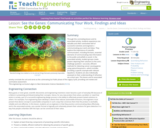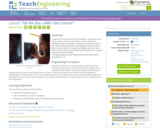
This animation introduces what antibodies are, where they come from, and how they can be used in the laboratory.
- Subject:
- Biology
- Science
- Material Type:
- Lecture
- Provider:
- LabXchange
- Provider Set:
- LabXchange Videos
- Date Added:
- 10/25/2023

This animation introduces what antibodies are, where they come from, and how they can be used in the laboratory.

Biology 2e is designed to cover the scope and sequence requirements of a typical two-semester biology course for science majors. The text provides comprehensive coverage of foundational research and core biology concepts through an evolutionary lens. Biology includes rich features that engage students in scientific inquiry, highlight careers in the biological sciences, and offer everyday applications. The book also includes various types of practice and homework questions that help students understand—and apply—key concepts. The 2nd edition has been revised to incorporate clearer, more current, and more dynamic explanations, while maintaining the same organization as the first edition. Art and illustrations have been substantially improved, and the textbook features additional assessments and related resources.


By the end of this section, you will be able to do the following:
Explain adaptive immunity
Compare and contrast adaptive and innate immunity
Describe cell-mediated immune response and humoral immune response
Describe immune tolerance

In this simulation the learner will design a sequence of experiments to
generate a coronavirus vaccine.

This video describes the non-adaptive immune system, innate immune system, and the adaptive immune system.

This video describes the non-adaptive immune system, and the innate immune system.

Learn about the human body's second line of defense against pathogens, innate immunity. [5:24]

If you want to check your understanding of immunology, this is the place to go. This resource has 13 different questions to test your knowledge, as well as tutorials that go with each question.

Through this concluding lesson and its associated activity, students experience one valuable and often overlooked skill of successful scientists and engineers communicating your work and ideas. They explore the importance of scientific communication, including the basic, essential elements of communicating new information to the public and pitfalls to avoid. In the associated activity, student groups create posters depicting their solutions to the unit's challenge question accurate, efficient methods for detecting cancer-causing genes using optical biosensors which includes providing a specific example with relevant equations. Students are also individually assessed on their understanding of refraction via a short quiz. This lesson and its associated activity conclude the unit and serve as the culminating Go Public phase of the Legacy Cycle, providing unit review and summative assessment.

Students are introduced to the unit challenge discovering a new way to assess a person's risk of breast cancer. Solving this challenge requires knowledge of refraction and the properties of light. After being introduced to the challenge question, students generate ideas related to solving the challenge, and then read a short online article on optical biosensors that guides their research towards solving the problem.

This pathway introduces the concept of vaccination, how vaccines are developed, and the purpose of clinical trials during vaccine development. The coronavirus SARS-CoV-2—which causes COVID-19—serves as an example.